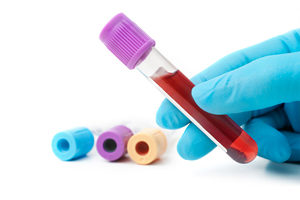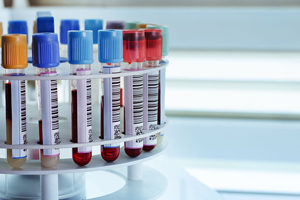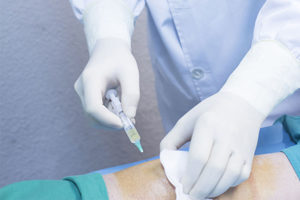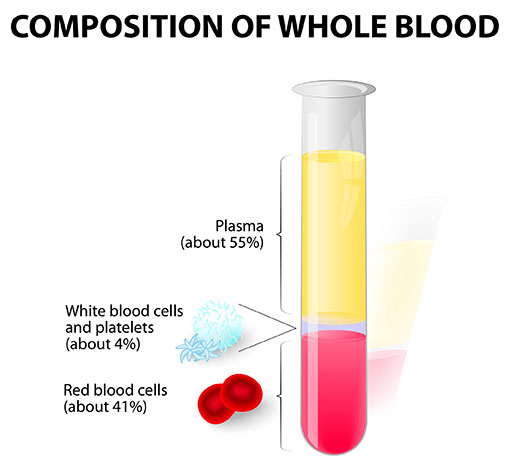Platelet Rich Plasma (PRP)
Athletes Use PRP for Accelerated Healing - Now Affordable for Everyone
Platelet-Rich Plasma (PRP)
A Non-Surgical Option for Musculoskeletal Injuries
Revolutionary Treatment that Relieves Pain by Promoting Long Lasting Healing of Musculoskeletal Conditions
According to the World Health Organization (WHO), musculoskeletal injuries are the most common cause of severe long-term pain and physical disability. Soft tissue injuries including tendon and ligament trauma accounts for 45% of all musculoskeletal injuries in the USA. For many years, our best option for treating musculoskeletal injuries, sprains and strains was to inject local (numbing) anesthetics and anti-inflammatory steroids into the affected area to reduce swelling and pain.
Over time, we have learned that although steroid injections can be helpful and effective, prolonged and repeated use may not be beneficial. Fortunately for our patients today, advances in science have allowed us to find new and targeted approaches to treating these kinds of injuries.
Platelet-rich plasma or PRP is an “autologous blood therapy” that uses a patient’s own blood components to stimulate a healing response in damaged tissues. PRP provides an alternative to drugs and surgery by promoting safe and natural healing.
What is Platelet-Rich Plasma (PRP)?
PRP is an FDA-approved therapeutic injection process for the growth, repair, and rehabilitation of connective tissue, such as shoulders, knees, hips, neck, back, etc. PRP therapy aides the body’s natural healing process by delivering a higher concentration of platelets, directly into the area of need. Platelet Rich Plasma involves drawing a sample of your blood, which is then placed in a centrifuge to isolate the blood platelets. This Platelet Rich Plasma (PRP) is precisely injected back into the area in need of repair, enhancing the healing process. The process has been shown to be safe and effective in treating the following common conditions:
- Osteoarthritis-Knee, Shoulder, Hip & Spine
- Rotator Cuff Strains & Tears
- Anterior Cruciate Ligament (ACL)
- Pelvic Pain & Instability
- Back & Neck Injuries / Pain
- Meniscus Tear
- Tennis Elbow
- Tendonitis & Ligament Sprains
- Chronic Knee Pain
- Muscle Strains
- Non-Healing Wounds
- Fractures
- And More….
I fell and hurt my knee and was in excruciating pain for a week when I contacted Bay Area Neuromuscular Therapy. During my first visit they addressed my pain immediately with a deep tissue laser treatment and suspected a fracture, which was confirmed by sending me out for an MRI. Although I was skeptical, I agreed to their recommendation of platelet rich plasma as a regenerative therapy. After the first injection and laser treatment, the pain reduced significantly to a tolerable level, by the second of the three-injection treatment, my knee was pain free. I highly recommend this treatment and the level of attention I received.
Call 727-461-3896 Today!
Set up a New Patient EvaluationHow Does PRP Therapy Work?
To prepare the PRP injection, blood is drawn from the patient and is spun in a centrifuge at a high speed so that it is separated into is four components, specifically, red blood cells, white blood cells, platelets and plasma. This forms a “platelet-rich plasma” solution which is then injected into and around the point of injury, jump-starting and significantly strengthening the body’s natural healing signals. Because your own blood is used, there is no risk of a transmissible infection and a very low risk of allergic reaction.


What Are the Expected Results?
Because the goal of PRP therapy is to resolve pain through healing, it could prove to have lasting results. Initial improvement may be seen within a few weeks, gradually increasing as the healing progresses. Research studies and clinical practice have shown PRP therapy to be very effective at relieving pain and returning patients to their normal lives. Both ultrasound and MRI images have shown definitive tissue repair after PRP therapy to confirm the healing process. The need for surgery can also be greatly reduced by treating injured tissues before the damage progresses and the condition is irreversible.
New PRP Patient Evaluation Request
Is PRP Right for Me?
If you have a tendon or ligament injury and traditional methods have not provided relief, then PRP therapy may be the solution. The procedure is less aggressive and less expensive than surgery. It will heal tissue with minimal or no scarring, and alleviates further degeneration of the tissues. No ill effects have been reported in any of the many studies executed. This process uses the patient’s own blood thereby eliminating any chance of rejection response and minimizes the likelihood of infection. There will be an initial evaluation with our medical expert to see if PRP therapy is right for you. Keep in mind that big pharma does not profit when PRP works.


How Long Does it Take?
PRP therapy is a fast and safe procedure. All treatments are performed in office and takes approximately 30 minutes to one hour, including preparation and recovery time. In fact, most people return to their jobs or usual activities right after the procedure.
Clinical Studies
Here are a few studies that provide positive results for several orthopedic applications of PRP:
Effect of intra-articular injection of platelet-rich plasma on interleukin-17 expression in synovial fluid and venous plasma of knee osteoarthritis patients [LINK]
Clinical Results of Platelet-Rich Plasma for Partial Thickness Rotator Cuff Tears: A Case Series [LINK]
A Prospective, Randomized, Double-Blind, Parallel-Group, Placebo-Controlled Study Evaluating Meniscal Healing, Clinical Outcomes, and Safety in Patients Undergoing Meniscal Repair of Unstable, Complete Vertical Meniscal Tears (Bucket Handle) Augmented with Platelet-Rich Plasma [LINK]
The Effectiveness of Platelet-Rich Plasma Injections in Gluteal Tendinopathy: A Randomized, Double-Blind Controlled Trial Comparing a Single Platelet-Rich Plasma Injection With a Single Corticosteroid Injection. [LINK]

